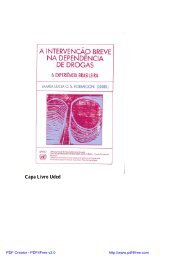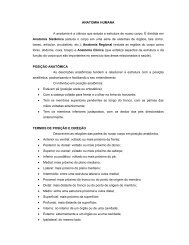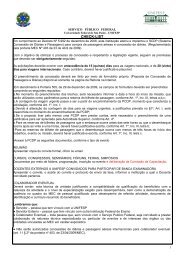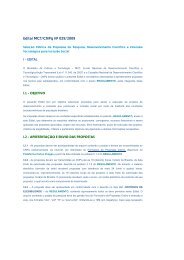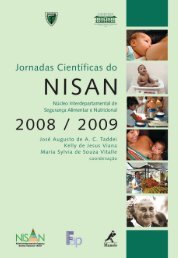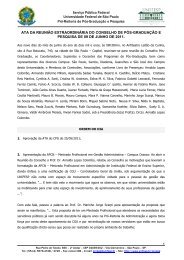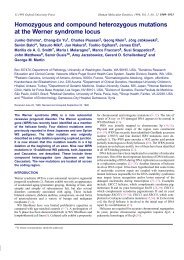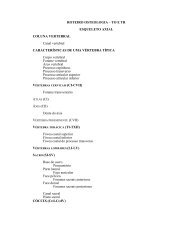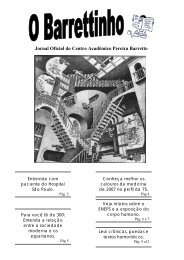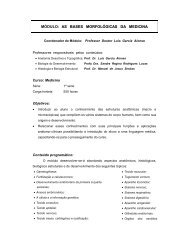flávia maria ribeiro vital efetividade e segurança da - Unifesp
flávia maria ribeiro vital efetividade e segurança da - Unifesp
flávia maria ribeiro vital efetividade e segurança da - Unifesp
You also want an ePaper? Increase the reach of your titles
YUMPU automatically turns print PDFs into web optimized ePapers that Google loves.
Apêndice<br />
of therapy, treatment failure, complications, increase in frequence of acute<br />
myocardial infarction, compliance of patients in accepting the NPPV.<br />
Criteria for considering studies for this review<br />
Types of studies<br />
Studies will only be included if they are randomised controlled trials (RCT) or<br />
quasi-randomised controlled trials (QRCT) with or without blinding (although<br />
blinding seems unlikely to be feasible). QRCT are those studies in which the<br />
allocation procedure is unlikely to be adequately concealed, such as coin flips, oddeven<br />
numbers or according to patient social security numbers, <strong>da</strong>ys of the week or<br />
medical record numbers.<br />
Types of participants<br />
Only studies of adult subjects with acute or acute on chronic cardiogenic<br />
pulmonary oedema will be included in this review. All subjects must have the<br />
diagnosis of cardiogenic pulmonary oedema using internationally accepted criteria<br />
such as those by the American Heart Association (ACC/AHA 1995) or European<br />
Society of Cardiology (Nieminen 2005).<br />
The diagnosis of AHF is based on the symptoms and clinical findings such as:<br />
dyspnoea, shortness of breath (dry cough, sometimes with frothy sputum), pallor<br />
or even cyanosis, cold clammy skin, and normal or elevated blood pressure. Fine<br />
rales are usually audible over the lung fields. This should be supported by<br />
appropriate investigations such as ECG, chest X-ray (to show pulmonary<br />
congestion/oedema), biomarkers, and Doppler-echocardiography.<br />
Trials where subjects have a primary diagnosis of pneumonia, or other<br />
underlying pathologies, and weaning studies will not be considered for inclusion in<br />
this review.<br />
Types of intervention<br />
Intervention: stan<strong>da</strong>rd medical care (SMC) (ACC/AHA 1995) for the<br />
management of cardiogenic pulmonary oedema plus NPPV (CPAP or Bi-level)<br />
applied through a nasal or facemask.<br />
The control group may include any form of stan<strong>da</strong>rd therapy for the<br />
management of cardiogenic pulmonary oedema, but which does not involve NPPV<br />
or any other kind of ventilatory support .<br />
Types of outcome measures<br />
Primary outcome measure:<br />
• Hospital mortality.<br />
Secon<strong>da</strong>ry outcome measures:



